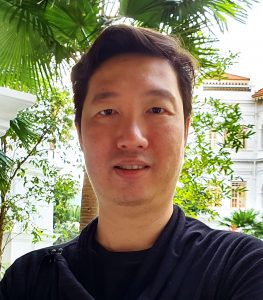Why Singapore’s English Teachers Should Embrace Singlish, Not Fight It
Is it time for Singaporean educators to embrace Singlish as a legitimate learning tool? What the Research […]
Read More
Amidst the height of the COVID-19 pandemic in Singapore, schools were shut, and full home-based learning was implemented nationwide. As the importance of digitally-mediated learning presented itself, so did concerns over the digital divide – the gap between those who have access to resources and the know-hows for online learning and those who don’t. Assistant Professor Victor Lim Fei from NIE shares his opinion on home-based learning and closing the digital divide.
 At his June 2020 MOE Workplan speech which was shared online, the education minister spoke on the initiative of making home-based learning (HBL) a regular feature of education in Singapore.
At his June 2020 MOE Workplan speech which was shared online, the education minister spoke on the initiative of making home-based learning (HBL) a regular feature of education in Singapore.
He also made it clear that “home-based learning” need not happen at home, as students can also be in school. Regardless of location, the emphasis is on creating more space for digitally-mediated self-directed and inquiry-based learning for students.
This is complemented by another initiative to equip every secondary school student with a personal digital learning device by end-2021 under the National Digital Literacy Programme. As the minister puts it, it is time to close the digital divide.
The digital divide is more than access to devices. It is also about the digital literacies of students and the proficiencies of teachers to design for online learning. Normalizing HBL will provide more opportunities for teachers to hone their skills to design online learning and for students to practise digital literacies.
As the last-minute frantic scramble to set up online learning during the Circuit Breaker period has shown us, there has been varying quality in students’ HBL experiences. Many parents have also found themselves needing to guide their children, particularly those in primary schools, through the teacher’s instructions.
Some parents have had to navigate across multiple platforms and log-ins, as well as manage tasks such as scanning and uploading of completed worksheets, which are beyond the technical proficiency of young children.
Nevertheless, the learning for the children has continued. Parents and children, after a few flustered days, have adapted quickly to the routines and expectations of HBL. The continuation of learning is important given that research has documented that suspension of learning time can cause a loss of knowledge and skills gained earlier.
Most primary and secondary teachers in Singapore would not have had much opportunities to design online learning experiences in the context of full HBL, except for the occasional e-learning day that typically takes place once a year.
While the use of technology to support classroom teaching has been widely adopted in schools, online learning requires a different set of pedagogical considerations which teachers, who are used to face-to-face learning, need to have familiarity and practice with.
As educational researchers have long recognized, it is not the technology but the teacher that makes the ultimate difference. Despite their lack of familiarity and practice, it is heartening to see teachers stepping up to the occasion to deliver HBL to their students to the best of their ability during the Circuit Breaker period.
The good work done by the teachers despite their relative lack of familiarity in designing online learning experiences reveals the deep reservoir of professional competence that the teachers in Singapore possess, which they have tapped into when the need arose.
For example, teachers from Anglo-Chinese School (Junior) created videos of their lessons using PowerPoint and uploaded them on the Singapore Student Learning Space.
The teachers also shared creative ideas such as a virtual “pyjamas party” where students wore pyjamas and brought their soft toys to a video meeting for a Primary Two English lesson on the topic of dreams.
Such innovations allude to what more teachers can do if they have more familiarity and practice in designing online learning experiences.
“As educational researchers have long recognized, it is not the technology but the teacher that makes the ultimate difference. Despite their lack of familiarity and practice, it is heartening to see teachers stepping up to the occasion to deliver HBL to their students to the best of their ability during the Circuit Breaker period.”
– Victor, on the role teachers play in delivering HBL to their students
With the creation of more opportunities for online learning in the “new education normal”, teachers and students can have the best of both worlds. Students can experience the best of what physical schooling can offer, and enjoy the new ways of learning through HBL.
Teachers can also continue to practise and hone their skills in designing online learning experiences and students will have more opportunities to grow their digital literacies.
The pandemic has radically advanced the digitalization efforts of primary and secondary school education in Singapore.
Our teachers and students’ experience over the last few months as well as the vision of the policymakers and curriculum planners will pave the way for the “new education normal” in Singapore towards a greater valuing of online learning and a sensible implementation of a blended form of learning in schools, combining the best of physical instruction and online learning for our students.